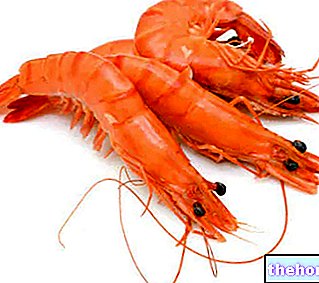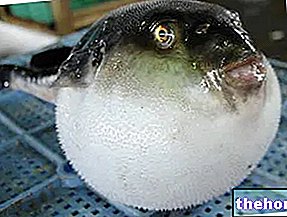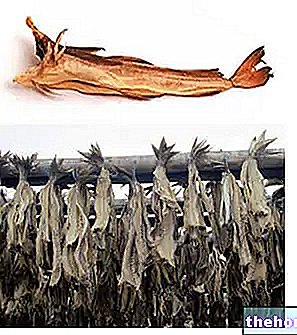What are
THE sea dates they are edible bivalve molluscs (or lamellibranchs). Their delicacy has made them a highly coveted and appreciated fishery product, but also protected in many areas of the planet. In Italy and in other countries, the sea date is in fact considered a protected species.

Sea dates, unfortunately (and now we will see why), are a real delicacy. They are characterized in fact by a very particular ecological niche, which foresees the settlement of the mollusk inside the limestone rocks; here, they erode their own accommodation thanks to very particular acid secretions, secreted by specialized glands, in synergy with the mechanical friction exerted with the shell.
Sea dates, in general, cannot be caught without breaking the rock in which they settle and, also for this reason, their collection has become prohibited by law. The low population density (due to the extreme slowness with which they grow), and the need to deface the coastal coast to extract them, have made dates of the sea one of the lamellibranchs most subject to environmental protection of the entire category.
The nutritional intake of dates of the sea is slightly different than that of mussels.
Description
Sea dates have the shape of a long, narrow ellipse, with one end more rounded than the other. The color is dark brown with shades of rust, it has a certain phosphorescence but inside it has a typically mother-of-pearl white-blue pigment. The sea date shell is composed of two equivalent valves which, on the outside, show evident growth lines. .
Sea dates reach a size of 8-10cm, but the growth is extremely slow; they take up to 20 years to finish just 5cm in length.
Sea dates show sexual dimorphism and reproduce in the summer months of July and August. The first stage of newborns is larval; they, carried by the current, tend to cling to rocks (or shells) by means of the fine linen (tuft of fiber similar to that of mussels) which, at a later time, will fall off.
They are widespread in the Mediterranean Sea but, contrary to what is mentioned in certain bibliographic sources, their presence does NOT affect (or only marginally) the western Adriatic coast, which starts from Veneto and ends in Abruzzo.
Fishing
As anticipated, date fishing is considered an illegal practice. Italy, even before the European Union, banned fishing with a ministerial decree of 1998; in the other European countries it was necessary to wait until 2006 (Art. 8 EC Regulation 1967/2006).
In addition to fishing, the trade in sea dates is totally abolished in Italy and Europe (Art. 8 EC Regulation 1967/2006 with extension to 30 September 2007). The reasons are clear; as also mentioned in the regulations in force, the collection of sea dates (which involves the use of pneumatic hammers or, in the small, manual chisels):
- It involves irreversible damage to the limestone coasts
- It can seriously compromise the survival of the Species.
Obviously, still today we are witnessing the continuous transgression of the law that regulates the collection activity; poaching operations are frequently intercepted and sanctioned, but this does not seem sufficient to eradicate the habit in the local population (especially in the areas of Sorrento and the islands, large and small, in southern Italy; the situation in the center-north is much less problematic ).
Gastronomy and Nutritional Properties
It goes without saying that, being a protected species, below I will NOT report any recipe for the preparation of sea dates.
Furthermore, since sea dates are currently still very present in the black market of prohibited products, especially in order to discourage their capture, I have decided to completely disregard both the advice for the purchase and the notes relating to food hygiene and storage.
I will therefore limit myself to mentioning that sea dates can be prepared in a similar way to other bivalves and that "raw" consumption is also very widespread, in which the carbohydrate content is particularly evident.
How to Clean and Cook Mussels
How to Clean and Cook Clams
From a chemical-nutritional point of view, dates of the sea are not frequently included in the composition tables disseminated by research bodies. Some sources, of which it is not possible for me to establish the reliability, list the following parameters:
Water: 74.6g, Carbohydrates: 24.2%, Fat: 6.9%, Protein: 68.9%, Calcium: 31.0mg, Iron: 3.19g, Phosphorus: 190.0mg, Magnesium: 48.0mg , Manganese: 0.04mg, Potassium: 250.0mg, Selenium: 0.04g, Sodium: 301.0mg.
Fish, Molluscs, Crustaceans Anchovies or Anchovies Garfish Alaccia Eel Lobster Herring Lobster Whitebait Bottarga Sea bass (Sea bass) Squid Canocchie Scallops Canestrelli (Sea scallops) Capitone Caviar Mullet Monkfish (Monkfish) Mussels Crustaceans Dates Sea Fruits Fish Flour Fauna Fish stock Prawns Crabs Spider crab (Granceola) Halibut Sea salad Lanzardo Leccia Sea snails Prawns Cod Molluscs Octopus Hake Ombrina Oysters Sea bream Bonito Pangasius Paranza Anchovy paste Fresh seasonal fish Blue fish Puffer fish Swordfish Plaice Octopus (Octopus) Hedgehog of Sea Amberjack Salmon Sardines Sardines Scampi Cuttlefish Mackerel Sole Stockfish Surimi Sushi Telline Tuna Canned tuna Mullet Trout Fish roe Bluefish Clams OTHER FISH ARTICLES Categories Alcoholic Food Meat Cereals and derivatives Sweeteners Sweets Offal Fruit Dried fruit Milk and derivatives Legumes Oils and fats Fish andpeach products Salami Spices Vegetables Health recipes Appetizers Bread, Pizza and Brioche First courses Second courses Vegetables and Salads Sweets and Desserts Ice creams and sorbets Syrups, liqueurs and grappa Basic preparations ---- In the kitchen with leftovers Carnival recipes Christmas Light diet recipes Women's, mom's and dad's day recipes Functional recipes International recipes Easter recipes Celiac recipes Diabetic recipes Holiday recipes Valentine's Day recipes Vegetarian recipes Protein recipes Regional recipes Vegan recipes




























